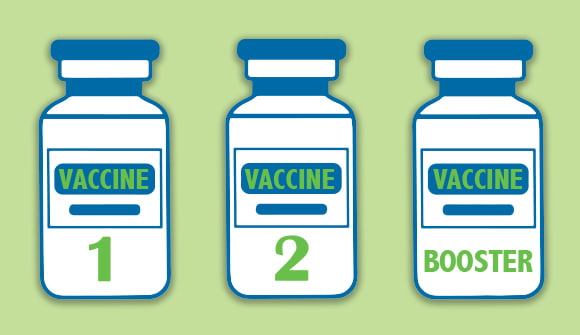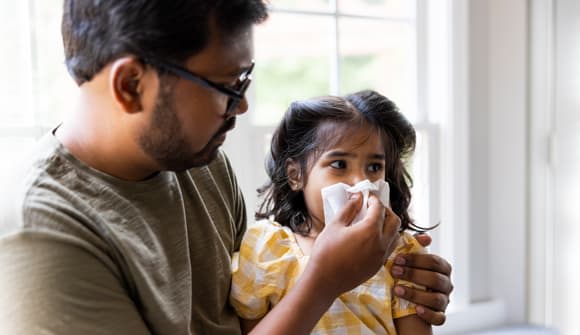Pandemic panic
More people are experiencing panic attacks thanks to COVID-19.
Article Author: Katie McPherson
Article Date:

If you’ve been feeling anxious this year, you’re not alone. A recent study published in JAMA Internal Medicine found all the events of 2020 may actually have caused a record spike in anxiety. The evidence? Google searches for phrases like “am I having a panic attack?” and “signs of anxiety attack” reached record highs after the United States declared a national state of emergency in early March in response to the coronavirus pandemic.
If you’re dealing with anxiety symptoms for the first time this year, it’s natural to wonder what qualifies as a panic attack. Or…is it an anxiety attack? Most importantly, what should you do when you feel one of these episodes come on?
Panic attack = anxiety attack
Kristen Galloway, PhD, a psychologist at Baptist Behavioral Health, says panic and anxiety attacks are the same thing. Whatever you call them, the first step to preventing them is understanding what they are and why they happen.
“Panic is a normal part of our bodily functions. It is our body’s way of alerting us something is wrong. We can, however, have false positives, when the body has a panicked response in the absence of any threat or danger. A panic attack, sometimes referred to as an anxiety attack, is described by the DSM-5 (our guidebook to diagnose mental health conditions) as ‘an abrupt surge of intense fear or discomfort that reaches a peak within minutes.’”
Panic attacks can cause a wide variety of symptoms that differ for every person. But if you’re experiencing four or more of these symptoms, you could be having one:
- Chills or heat sensations
- Detachment from your surroundings or feeling like you’re in a dream
- Feeling dizzy, unsteady, lightheaded or faint
- Pain or discomfort
- Increased heart rate or feeling like your heart is pounding
- Nausea or abdominal distress
- Paresthesia (numbness or tingling)
- Shortness of breath, or feeling like you’re choking or being smothered
- Sudden fear of having a heart attack or dying
- Sudden fear of losing control
- Sweating
- Trembling or shaking
Thanks, COVID
Dr. Galloway said it makes sense why more people are having panic attacks since COVID-19 first struck: it can be stressful trying to manage daily life during a global pandemic.
"Given the nature of the pandemic and the increased stress most people are experiencing, it is likely that more people are experiencing panic attacks."
For some people, activities that used to be totally OK now cause anxiety, like going to the grocery store and worrying about becoming infected. If you get somewhere and feel a panic attack coming on (or experience one at home), there are a number of ways you can help yourself cope.
What to do during a panic attack
First, the shortness of breath many people experience during a panic attack can feel even worse in a mask.
“You can try to avoid going places where you’ll have to wear a mask for long periods of time. Or, if you’re out, try stepping away to somewhere you can socially distance and remove your mask until you feel you can breathe again,” said Dr. Galloway.
During a panic attack, try to focus on your breathing.
“The goal is to get you out of fight-or-flight mode and regulate your body so you can turn off the panic,” Dr. Galloway said. “The best way to do this is to pace your breathing. Breathe in through your nose and out through your mouth. When you breathe in, try to slightly push out your stomach and chest to get the most oxygen. Sometimes, it’s helpful to put your hands on your chest and belly to guide you. Pause for a second between inhaling and exhaling, making sure the inhale is longer than the exhale. Think, ‘two seconds in, four seconds out,’ or whatever amount of time feels best to you.”
For some people, the so-called “tense-and-release” method of reducing panic is better.
“When we become physically stressed, we naturally tense our body and turn on our fight-or-flight symptoms,” Dr. Galloway explained. “Try to tense your hands for three seconds and release, repeating this three or four times. Then, try doing the same with other parts of your body where you carry your stress, like your jaw, shoulders or stomach.”
For others, good old distraction techniques are the best way to get through an attack. That could mean watching a TV show, going for a walk, or scrolling through photos of happy memories that transport you somewhere else. Whatever coping method you use, it’s important to practice it often when you’re not panicking.
“Practice makes perfect. We never want to teach someone to drive for the first time in rush-hour traffic. When we learn how to drive, we practice with supervision, instructions, and in easy scenarios, like parking lots,” Dr. Galloway said. “It’s important to practice skills before having a panic attack and plan for using skills in situations where you have previously struggled.”
If you are experiencing panic attacks or any other symptoms of anxiety, Baptist Behavioral Health is here to help. Call 904.376.3800 to speak with a patient coordinator, who can schedule you with the provider best suited for your needs. Reference: JAMA Internal Medicine



